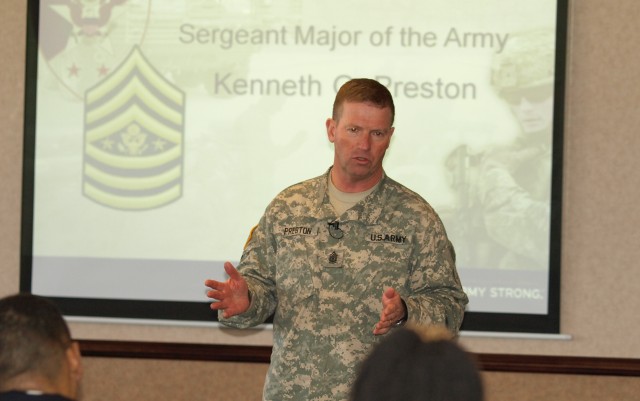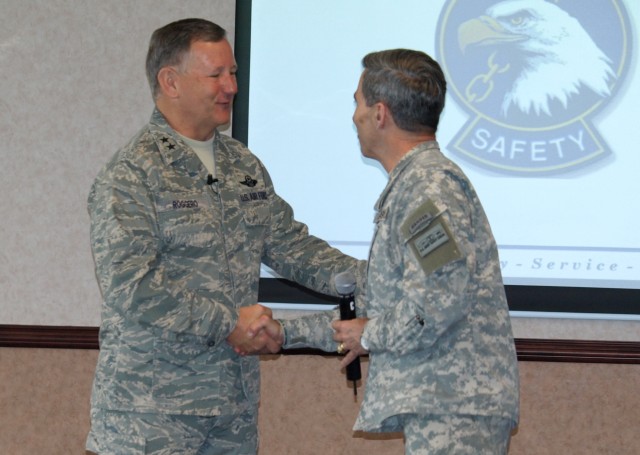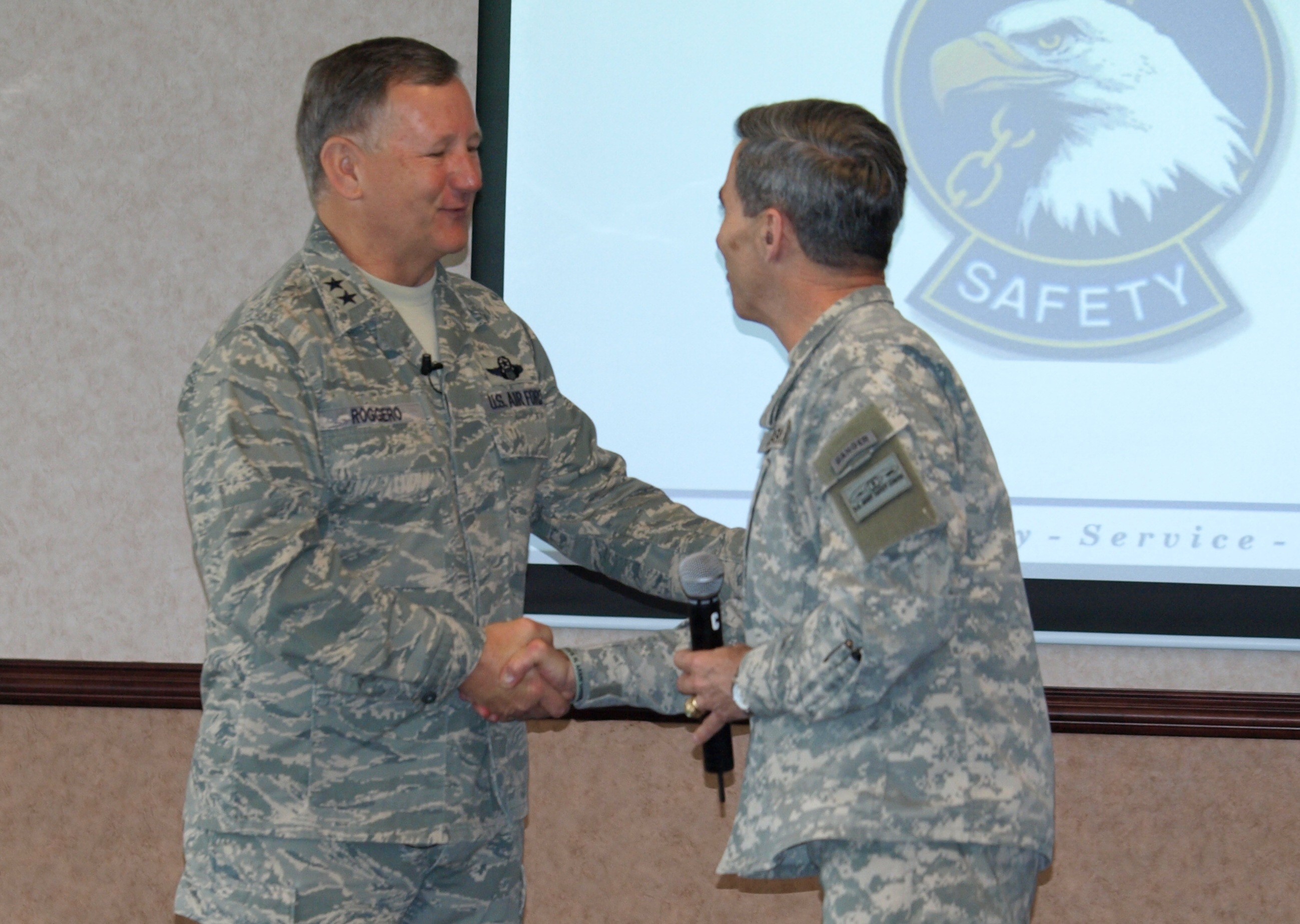FORT RUCKER, Ala. (Feb. 25, 2010) - Sergeant Major of the Army Kenneth O. Preston urged Army safety professionals to do the hard work needed to get the force to "the left of the bang" Feb. 23 during the Army Senior Safety Symposium here.
"We need to build resilliancy within our formations so our Soldiers are equiped to make the right decisions and take the right action" long before a situation turns tragic, Preston said as he addressed dozens of Army safety leaders. "I need your help to get us to the left of the bang."
Succeeding in this effort and getting the Army's Soldiers to be more proactive about safety must be a team endeavor that encompasses not only the Soldiers themselves, but safety professionals, Family members and men and women from throughout the Department of Defense, said symposium host Brig. Gen. William T. Wolf, Director of Army Safety and Commanding General of the U.S. Army Combat Readiness/Safety Center.
"(We) must leverage whatever (we) can to save a life," he said.
The Army has recently made some great strides in leveraging resources to save more lives, a point rarely missed by the symposium speakers. These achievements include the stabilization of on-duty accidental fatalities and a significant decrease in the number of off-duty accidental fatalities.
"This is the story of an astonishing improvement in protecting our Soldiers and Families during a time of great risk both here and abroad," Lt. Gen. David Huntoon, Director of Army Staff, said via video teleconference from the Pentagon.
Although the recent decline in accidents is certainly something to be proud of, Huntoon said it is important for Soldiers, Leaders and Civilians throughout the Army to avoid the pitfalls of complacency and keep moving forward toward even greater accomplishments.
"We have to remain vigilant," he said. "(Safety professionals), put your arms around your commanders and let them know that we are doing great but there may be some dark days ahead."
Huntoon said there may be big changes coming within the Army as the force adapts to meet the needs of persistent conflict. Potential budget cuts and constant troop movement are all things that could challenge risk management programs in the future and Huntoon encouraged the safety professionals to think about how they could be more efficient and more effective in the future.
One way Army safety will become more efficient and effective in the months and years to come is by establishing more "joint" safety operations, according to symposium guest speaker Maj. Gen. Frederick Roggero, Air Force Chief of Safety and Commander of the Air Force Safety Center.
"We are all in this fight together," he said. "As we move into the future, (the Army and the Air Force) will have to work more efficiently and effectively and that means working closer together."
Tad Davis, Deputy Assistant Secretary of the Army for Environment, Safety and Occupational Health, said that as the Army moves forward, all safety professionals, regardless of service, must constantly be analyzing their current situation or program and asking how they could do it better.
"We have to look at what we do, why we do it and recognize there is still a lot to learn" about risk management, he said. "There are things out there that we have to be prepared for and we have to work hard to see over that next ridgeline."






Social Sharing